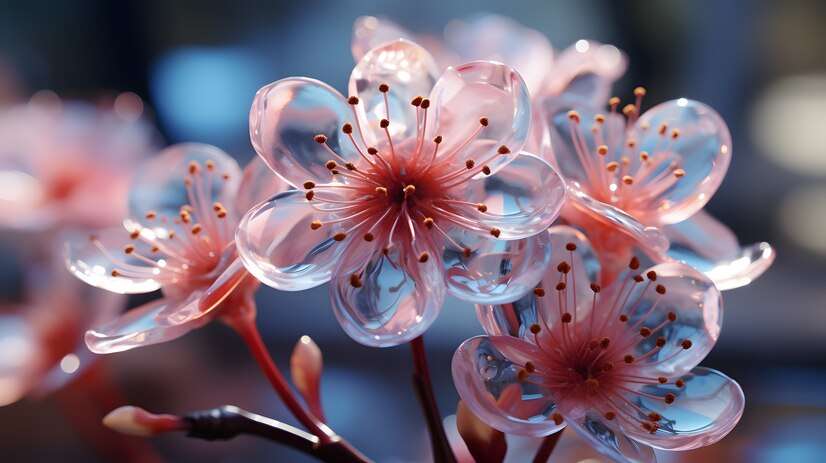Flowers have always held a special place in the hearts of people around the world. They symbolize beauty, love, hope, and renewal. Nestled within the serene district of Negishi, particularly flowers near 4-chōme-3-3 negishi play a significant role in enhancing the charm of the area. For residents and visitors alike, the floral landscape of this region offers an oasis of tranquility and a reflection of the seasonal rhythms of nature. This article will explore the various flowers found in this area, their cultural significance, and how they contribute to the local ecosystem.
A Glimpse into Negishi’s Floral History
Negishi, located in Yokohama, Japan, is a place steeped in history and culture. The district is known for its beautiful parks, open spaces, and traditional gardens. Historically, this area has been associated with the cultivation of flowers and plants, a tradition that has carried through to the modern day. The importance of flowers near 4-chōme-3-3 negishi in Japanese culture cannot be overstated; they are integral to festivals, religious ceremonies, and even everyday life.
The Negishi district’s proximity to Yokohama’s downtown area allows it to serve as a quiet refuge where nature flourishes, with flowers playing a key role in creating that peaceful environment. Around 4-chōme-3-3, gardens and parks feature flowers near 4-chōme-3-3 negishi that bloom year-round, each season bringing with it a new set of colors and fragrances.
Seasonal Blooms: A Year-Round Floral Wonderland
The climate of Negishi is well-suited for a variety of flowers. The moderate weather conditions, combined with the region’s well-maintained parks and gardens, create the perfect environment for vibrant, flourishing flora. Each season in Japan is distinctly marked by its own set of flowers near 4-chōme-3-3 negishi, making Negishi a living calendar of blooms.
- Spring: Sakura (Cherry Blossoms)
Spring in Japan is synonymous with the cherry blossom (sakura), and 4-chōme-3-3 Negishi is no exception. In this area, cherry trees bloom in full splendor, painting the entire neighborhood in shades of pink and white. Visitors flock to parks near this location to witness hanami (flower viewing), a traditional Japanese custom where people gather under the cherry trees to appreciate their beauty.
The fleeting nature of cherry blossoms, which last only a short while before falling, is a metaphor for the impermanence of life, a theme deeply embedded in Japanese philosophy. Besides their cultural significance, these blossoms also create a habitat for various insects and pollinators, playing an essential role in the ecosystem of Negishi. - Summer: Hydrangeas and Irises
As the temperatures rise, the neighborhood sees the arrival of vibrant hydrangeas and irises. Hydrangeas, with their large, bold clusters of flowers, create a striking contrast to the greenery of the landscape. In 4-chōme-3-3, hydrangeas come in shades of blue, purple, and pink, depending on the soil pH levels. These flowers near 4-chōme-3-3 negishi thrive in the humid climate of the Japanese summer and can be found in full bloom in many residential gardens and public spaces around Negishi.
The iris, another summer bloom, has long been associated with Japanese gardens. With their tall, slender stems and delicate petals, irises add elegance and grace to the floral landscape near 4-chōme-3-3. The combination of hydrangeas and irises creates a dynamic and colorful scene, drawing photographers and flower enthusiasts alike. - Autumn: Chrysanthemums and Cosmos
As summer fades, the autumn season in Negishi brings forth chrysanthemums (kiku) and cosmos. Chrysanthemums are one of the most important flowers near 4-chōme-3-3 negishi in Japanese culture, symbolizing longevity, rejuvenation, and the Imperial Family. Around 4-chōme-3-3, you’ll find chrysanthemums in all colors—yellow, white, purple, and red—often arranged in beautiful displays that reflect the meticulous attention to detail that Japanese gardening is known for.
Cosmos, often referred to as “autumn sakura,” also come into bloom during this season. These delicate flowers, with their daisy-like appearance, sway gracefully in the cool autumn breeze. Cosmos fields are a popular attraction for both locals and tourists, as they signal the transition from the warmth of summer to the crisp air of fall. - Winter: Camellias and Plum Blossoms
Winter doesn’t mean an absence of flowers near 4-chōme-3-3 negishi. Despite the cold, camellias (tsubaki) and plum blossoms (ume) bring life to the otherwise dormant landscape. Camellias are evergreen shrubs that produce brightly colored blooms, usually in shades of red, pink, or white. In traditional Japanese gardens near 4-chōme-3-3, camellias are a common sight and are admired for their resilience and beauty in the colder months.
Plum blossoms, though less famous than cherry blossoms, hold a special place in the hearts of the Japanese people. Blooming in late winter, they signify the approach of spring and are a symbol of endurance and hope. The subtle fragrance of these flowers can be found in many of the temples and parks scattered around Negishi, providing a quiet space for reflection and peace.
The Cultural and Ecological Impact of Flowers in Negishi

The flowers near 4-chōme-3-3 Negishi are more than just a visual treat; they are deeply embedded in the cultural fabric of the area. In Japanese culture, the appreciation of flowers—known as hanakotoba (the language of flowers)—holds great significance. Each flower has a specific meaning, and people often give flowers near 4-chōme-3-3 negishi as gifts to convey emotions that words might fail to express.
For instance, red chrysanthemums represent love, while yellow ones symbolize neglected love. Plum blossoms, on the other hand, signify perseverance, making them a popular motif during the New Year celebrations in Japan. Similarly, the sakura, as mentioned earlier, is a reminder of the transient nature of life.
From an ecological perspective, flowers near 4-chōme-3-3 negishi in the area serve as crucial components of the local ecosystem. They provide food and shelter to a wide range of species, including bees, butterflies, and birds. Pollination, facilitated by these flowers, is vital for maintaining biodiversity in Negishi. The gardens and parks in the area are carefully designed to support a variety of plant species, ensuring that the natural balance is maintained throughout the year.
The Role of Flowers in Enhancing Well-being
The presence of flowers near 4-chōme-3-3 negishi also plays an important role in enhancing the well-being of the community. Studies have shown that exposure to flowers and nature can reduce stress, improve mood, and increase overall happiness. In a fast-paced urban environment like Yokohama, spaces like Negishi provide residents with an escape, where they can reconnect with nature and find peace amidst the chaos of city life.
Walking through the flower-filled parks and gardens of Negishi is a sensory experience. The vibrant colors, soothing scents, and calming atmosphere work together to create an environment conducive to relaxation and mindfulness. Whether it’s a solitary walk through a chrysanthemum garden or a shared moment under a cherry blossom tree, the flowers near 4-chōme-3-3 negishi of Negishi offer moments of quiet joy and contemplation.
Conclusion
The flowers near 4-chōme-3-3 Negishi are a testament to the beauty and richness of nature in Japan. From the delicate cherry blossoms of spring to the hardy camellias of winter, the floral landscape of this area is a year-round celebration of color, life, and tradition. For those who take the time to explore this vibrant neighborhood, the flowers provide not only aesthetic pleasure but also a deeper connection to the natural and cultural heritage of Negishi. Whether you are a local resident or a visitor, the flowers near 4-chōme-3-3 negishi of this region offer a beautiful reminder of nature’s enduring presence in our lives.
FAQs.
1. What are the most popular flowers found near 4-chōme-3-3 Negishi?
The area is known for cherry blossoms in spring, hydrangeas in summer, chrysanthemums in autumn, and camellias in winter.
2. When is the best time to visit Negishi for cherry blossoms?
The best time to see cherry blossoms near 4-chōme-3-3 Negishi is usually in late March to early April.
3. Are there parks near 4-chōme-3-3 Negishi where I can see flowers year-round?
Yes, there are several parks and gardens in the area where flowers bloom throughout the year, showcasing different seasonal varieties.
4. What cultural significance do flowers hold in the Negishi area?
Flowers in Negishi, like cherry blossoms and chrysanthemums, are deeply tied to Japanese traditions, symbolizing beauty, impermanence, and longevity.
5. Are there guided flower viewing tours available near 4-chōme-3-3 Negishi?
Yes, during peak blooming seasons such as cherry blossom time, there are often guided tours available for flower enthusiasts.
